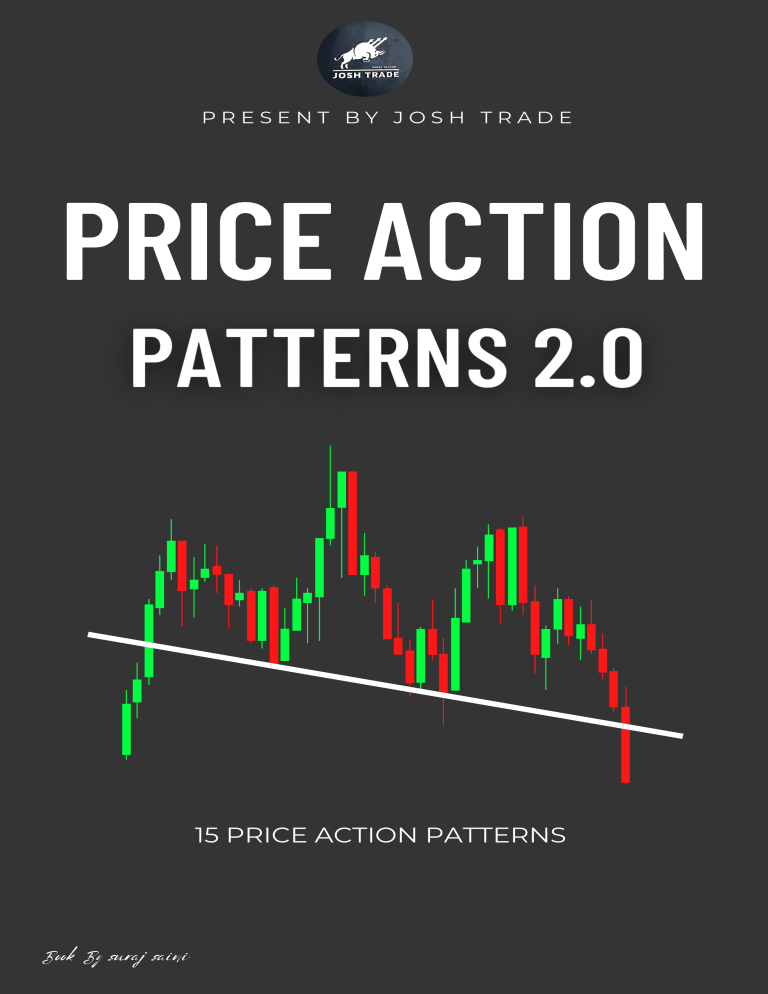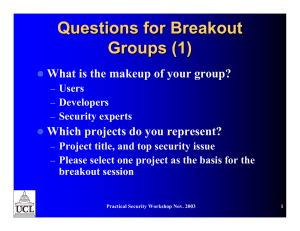
PRESENT BY JOSH TRADE PRICE ACTION 15 PRICE ACTION PATTERNS Book By suraj saini Ascending Triangle Descending Triangle Falling wedge Bullish Rectangel Rising Wedge Powered by joshtrade Bearish Rectangel Symmetrical Triangle Bullish Pennant Bearish Pennant Double Top Head and Shoulders Rising wedge Double Bottom Inverse Head and Shoulders Powered by joshtrade Falling Wedge Ascending Triangle The ascending triangle is formed in an uptrend and indicates a continuation of the uptrend. It is formed as a right-angled triangle with a resistance and a slope of higher lows. The resistance does not allow the prices of the securities to move more upward. The higher lows show that the buying pressure has increased. This pattern clearly indicates that the market moves higher as the higher lows are formed heading toward the resistance line. This indicates the strength of bulls and bulls are willing to pay more for the stock. Powered by joshtrade Breakout Resistance Powered by joshtrade Descending Triangle The descending triangle is formed in the downtrend and indicates the continuation of the downtrend. It is formed as a downward sloping triangle with support and a slope of lower highs. The support does not allow the prices of the securities to move more downward. The lower highs show that the selling pressure has increased. This pattern clearly indicates that the market moving lower as the lower highs are formed heading toward the support line. This indicates the strength of bears and they are willing to sell more for the stock. The breakout of the prices is confirmed when the prices break from the support level with volume and continue to move down. Powered by joshtrade Breakdown 0.382 Fibo Retracement 1:4 Powered by joshtrade Symmetrical Triangle A symmetrical triangle chart pattern represents a period of consolidation before the price is forced to breakout or breakdown. A breakdown from the lower trendline marks the start of a new bearish trend, while a breakout from the upper trendline indicates the start of a new bullish trend. The price target for a breakout or breakdown from a symmetrical triangle is equal to the distance from the high and low of the earliest part of the pattern applied to the breakout price point. Powered by joshtrade Breakout Support st te Re Support Powered by joshtrade 1-3 Breakdown Resistance Re te st Support Breakdown Powered by joshtrade Falling wedge A falling wedge is formed by two converging trend lines when the stock’s prices have been falling for a certain period. Before the line converges the buyers come into the market and as the result, the decline in prices begins to lose its momentum. This results in the breaking of the prices from the upper trend line. Depending upon the location of the falling wedges its indicates whether the trend will continue or reverse: Powered by joshtrade BreakOut BreakOut Resistance Support BreakOut Powered by joshtrade Bullish Rectangel A bullish channel is a continuation pattern having a positive slope. If the prices break from the upper channel line then it indicates the continuation of the prior bullish trend. Powered by joshtrade BreakOut 1-3 BreakOut Powered by joshtrade Bullish Pennant A bullish pennants pattern is formed after a sharp rise in the prices of the stock. After a long uptrend, traders try to close their position with the assumption that reversal is going to come. The prices began to consolidate as the traders start exiting the stock. But at the same time, new buyers start buying the stock which results in the breakout of the prices in the same direction as the prior uptrend. Powered by joshtrade BreakOut Bearish Trap Support Breakout Powered by joshtrade Rising Wedge The rising wedge in an uptrend indicates reversal to the downtrend. It is formed when the prices are making Higher Highs and Higher Lows compared to the previous price movements. It gives traders opportunities to take short positions in the market. Powered by joshtrade Breakdown Support Breakdown Powered by joshtrade Bearish Rectangel A continuation pattern occurring in a downtrend, where by traders look to enter into short positions once price breaks support and closes inside the ‘breakout zone’. Powered by joshtrade Breakdown Breakdown 1-3 Powered by joshtrade Bearish Pennant A bearish pennants pattern is formed after a sharp fall in the prices of the stock. After a long downtrend, traders try to close their sell position with the assumption that reversal is going to come. The prices began to consolidate as the traders start exiting the stock. But at the same time, new sellers start the shoals pharmacy.com selling the stock which results in the breakout of the prices in the same direction as the prior downtrend. Powered by joshtrade Breakdown Resistance Support Support Powered by joshtrade Double Top A double top chart pattern is a bearish reversal chart pattern that is formed after an uptrend. This pattern is formed with two peaks above a support level which is also known as the neckline. The first peak is formed after a strong uptrend and then retrace back to the neckline. After reaching back to its neckline, the price becomes bullish and rises again to form the second peak. The formation of this pattern is completed when the prices move back to the neckline after forming the second peak. When the prices break through the neckline or the support level then the bearish trend reversal is confirmed. Powered by joshtrade Top 1 Top2 Breakdown Resistance Reest Reest 1-3 Powered by joshtrade Head and Shoulders This pattern gives a market reversal signal post breakdown from the neckline which is accompanied by heavy volume. The neckline is basically the horizontal line which joins both the troughs to each other. The possibility of breakdown increases if the slope of the neckline is flat to downward sloping and the right shoulder is relatively smaller or equal to the left shoulder. Another important aspect to remember is that post breakdown from the pattern, there may be a possibility of retest to the neckline. The further breakdown is also accompanied with heavy volume which gives confirmation of the weakness. Powered by joshtrade Head Shoulder 1 Shoulder 2 Breakdown Resistance Support Breakdown Support 1-3 Powered by joshtrade Rising wedge The Rising Wedge in the downtrend indicates a continuation of the previous trend. It is formed when the prices are making Higher Highs and Higher Lows compared to the previous price movements. It gives traders opportunities to average or take short positions in the market Powered by joshtrade Breakdown Resistance Support Breakdown Support Powered by joshtrade Double Bottom A double bottom chart pattern is a bullish reversal chart pattern that is formed after the downtrend. This pattern is formed with two lows below its resistance level which is also known as the neckline. The first low is formed after a strong downtrend and then the prices retrace back to the neckline. Learn to Trade better with Candlesticks in 2 hours by Market Experts After reaching back to its neckline, the price becomes bearish and falls again to form the second low. The formation of this pattern is completed when the prices move back to the neckline after forming the second low. When the prices break through the neckline or the resistance level then the bullish trend reversal is confirmed and traders can enter a long position. Powered by joshtrade Breakout Botttom 2 Botttom 1 Breakout Resistance Support Breakout Retest Support 2 Support 1 Powered by joshtrade Inverse Head and Shoulders Inverse head and shoulders pattern indicates the end of bearish phase and onset of an uptrend. Traders enter a long position when the up breaks through the resistance line. They would look for a rise in volume to confirm the trend change. Inverse head and shoulders pattern appears frequently in the trendline, and since it shares many characteristics with the head and shoulder in an uptrend, it is also interpreted the same way. Powered by joshtrade Breakout Shoulder 2 Shoulder 1 Head Breakout Resistance Support Retest 1-3 Breakout Powered by joshtrade Falling Wedge The Falling Wedge in the downtrend indicates a reversal to an uptrend. It is formed when the prices are making Lower Highs and Lower Lows compared to the previous price movements. It gives traders opportunities to take buy positions in the market. Powered by joshtrade Breakout 1-3 Breakout Powered by joshtrade


